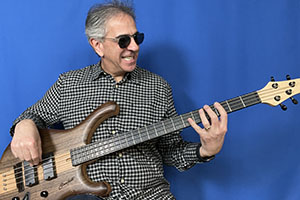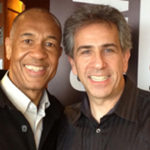You never know where you’ll find inspiration to learn bass
By Jon Liebman
Week of January 17, 2022
Throughout the course of my bass-playing career, I’ve heard lots of stories about what inspired people to learn bass.
In most cases, that “inspiration” came from the fact that no one else wanted to play it. Still, there are many instances of people who were fascinated with the bass, right from the beginning.
A couple weeks ago, I had a very special conversation with John Lodge of the Moody Blues, whose bass-playing inspiration was definitely a first for me. I’d never heard anything quite like it.
In the interview, John told me how his fascination with learning bass can be traced back to stories he’d read about lumberjacks being transported to Texas on a train, in the cargo area, which typically included a piano player.
As one story goes, the piano player was never allowed to stop playing, not once, throughout the entire duration of the trip. Consequently, he would eat and drink with his right hand, totally relying on his left hand to supply the music.
The left hand of a pianist, of course, is the hand that supplies the bass notes. To hear John tell the story was absolutely riveting.
“What turned me on to bass,” he says, “was the left-hand side of the piano by people like Fats Domino, Jerry Lee Lewis, Little Richard, all the blues players. That left-hand boogie piano.”
The legend of the piano players on the train is what brought about this whole new style of music. “So all this boogie piano and stride piano developed,” John says. “That fascinated me.”
Regardless of whether the legend is true, John just loved the stories, which in turn got him excited about learning bass.
Since it was all but impossible to find a bass guitar in England in the ‘50s, John initially settled for a guitar. “When I got my first guitar,” he says, “I used to learn all the boogie parts on the four strings on my guitar.”
As he tells it, figuring out how to play boogie piano lines on the bottom four strings of a guitar is how he ultimately became a bass player. He called it “guitar boogie,” and recommends that approach to anyone who wants to learn bass.
“For any bass player,” he says, “learn the guitar boogie, because if you learn guitar boogie, you’ve got all the feel (and) rhythm, and you know what all the notes are.”
What’s more, he says, once you get the basic patterns down, you can apply them to any key. “You can use those ad infinitum,” he says. “You really can!”
Once he discovered how to add 7ths to those patterns, another whole new world opened up. Next came minor chords, blues songs, and eventually, Moody Blues songs.
He also had some things to say about “all the other stuff” for learning bass, which you might find insightful. For John, though, it all started by learning boogie guitar. “That’s one thing I would say to people if you want to be a bass player,” he says.
You never know what’s going to inspire you when it comes to learning bass. John’s path to learning bass was a bit unusual, but, needless to say, it worked out pretty well for him.
Special note to Bottom Line Club members: There are quite a few lessons in the Jazz, Blues, and Building Bass Lines courses, as well as several others, that can be applied to old school boogie bass lines. If you’re so inclined, check them out. They’re fun!
Have a thought on the subject? Leave a comment below and let me know what you think. In the meantime, watch out my interview with John here.




